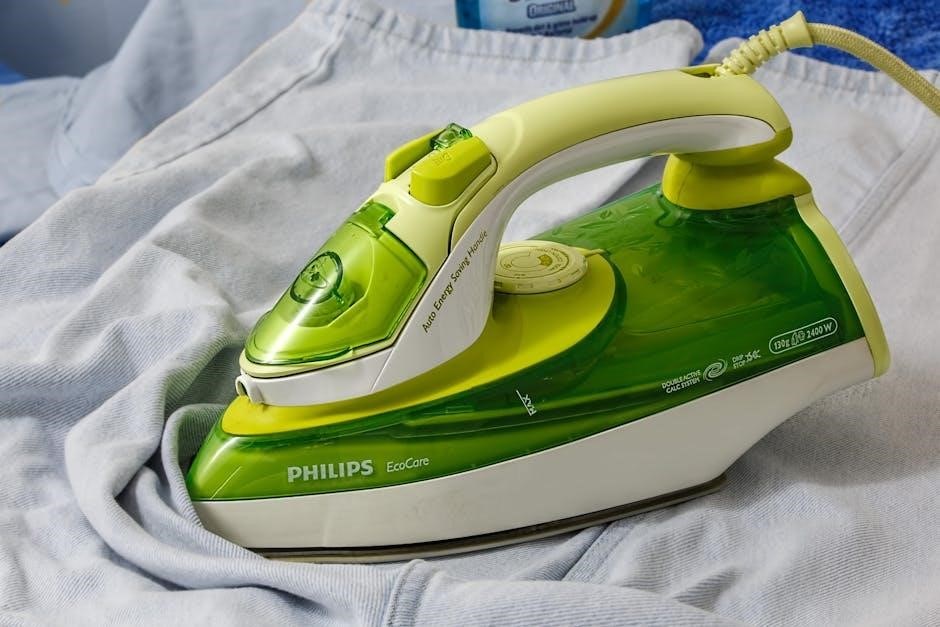acd heat pump remote manual

ACD Heat Pump Remote Manual: A Comprehensive Guide
Welcome to your comprehensive guide to understanding and utilizing your ACD heat pump remote! This manual provides essential information for optimal comfort and efficient operation of your system, ensuring you enjoy its benefits year-round․
Understanding ACD Heat Pump Models
Before diving into the remote control functionalities, it’s helpful to understand the ACD heat pump models compatible with this manual․ ACD offers a range of ductless mini-split heat pumps, including single-zone and multi-zone systems․ Some common models include UHD09KCH38S, UHD12KCH31S, UHD18KCH25S, UHD24KCH22S, CHD09KCH19S, CHD12KCH17S, CHD18KCH17S, CHD24KCH18S, MPD18KCH22S-O, MPD24KCH21S-O, MPD30KCH21S-O, MPD36KCH21S-O, and MPD42KCH21S-O․ These models vary in BTU capacity (ranging from 9,000 to 42,000 BTU) and SEER ratings․
Knowing your specific model number is crucial for referencing the correct settings and troubleshooting information․ Ductless systems, unlike central systems, connect the outdoor condenser unit to the indoor evaporator unit via refrigerant piping and electrical wiring, offering efficient and targeted heating and cooling․ Consult your unit’s label or original documentation to identify your exact ACD heat pump model․ Understanding your model’s capabilities ensures optimal remote control operation and overall system performance․

Remote Control Basics
This section will guide you through the fundamental functions of your ACD heat pump remote control, enabling you to easily manage your system’s operation and settings for optimal comfort․
Powering On/Off and Mode Selection
To begin, locate the power button on your ACD heat pump remote․ A single press will typically power the unit on, while another press will turn it off․ Ensure the remote is pointed directly at the indoor unit for reliable signal transmission․
Next, familiarize yourself with the mode selection buttons․ Common modes include “Cool,” “Heat,” “Dry,” and “Auto․” Press the “Mode” button to cycle through these options, observing the indicator on the remote’s display to confirm your selection․
“Cool” mode is for air conditioning, while “Heat” mode activates the heat pump for warming․ “Dry” mode reduces humidity, and “Auto” mode allows the system to automatically adjust between heating and cooling based on the room temperature․ Selecting the appropriate mode is crucial for efficient and comfortable operation․ Always wait at least 3 minutes before turning the air conditioner back on․
Adjusting Temperature and Fan Speed
Fine-tuning your comfort involves adjusting both the temperature and fan speed on your ACD heat pump․ Use the “Temperature Up” and “Temperature Down” buttons to set your desired room temperature․ The current setting is usually displayed prominently on the remote’s screen․ Remember that the optimal temperature may vary depending on personal preference and energy-saving goals․
Controlling the fan speed allows you to manage airflow and noise levels․ Locate the “Fan Speed” button on your remote․ Pressing it will typically cycle through options like “Auto,” “Low,” “Medium,” and “High․” “Auto” mode allows the system to automatically adjust fan speed based on the cooling or heating demand․ Choosing a lower fan speed can reduce noise, while a higher fan speed can provide quicker temperature changes․ Experiment with different settings to find what works best for you․
Using Swing and Timer Functions
Enhance your ACD heat pump experience by utilizing the swing and timer functions․ The “Swing” button controls the direction of airflow․ Pressing it typically activates vertical louver movement, distributing air evenly throughout the room․ Some models may also offer horizontal swing control․ Experiment to find the most comfortable setting, avoiding direct airflow on occupants․
The “Timer” function allows you to schedule your heat pump to turn on or off at specific times․ This is excellent for energy savings and pre-conditioning your space․ Locate the “Timer On” and “Timer Off” buttons on your remote․ Follow the on-screen prompts to set the desired time․ You can program the unit to start heating or cooling before you arrive home or turn off automatically at night․ Consult your remote’s display and the full manual for detailed programming instructions․

Operating Modes Explained
Your ACD heat pump offers various operating modes, each designed for specific comfort needs․ Understanding these modes ensures efficient and effective climate control․ This section details each mode’s function and optimal usage․
Cooling Mode
Cooling mode on your ACD heat pump is designed to lower the temperature in your room or space, providing relief from heat and humidity․ When activated, the system extracts heat from indoors and releases it outside, circulating cool air throughout the designated area․
To effectively use cooling mode, ensure windows and doors are closed to prevent warm air from entering․ Set your desired temperature using the remote control; the unit will then work to maintain that level․ Adjust the fan speed for optimal airflow and comfort․ Higher fan speeds circulate air more rapidly, while lower speeds offer quieter operation․
For maximum efficiency, avoid setting the temperature significantly lower than the outdoor temperature․ A difference of 10-15 degrees Fahrenheit is generally sufficient․ Regularly clean the air filters to maintain efficient cooling and air quality․ Consult your ACD heat pump manual for specific maintenance instructions and filter replacement schedules․
Heating Mode
Heating mode on your ACD heat pump is designed to efficiently warm your space during colder months․ Unlike traditional furnaces, heat pumps don’t create heat; they transfer it from one place to another․ In heating mode, your ACD unit extracts heat from the outside air (even in cold temperatures) and moves it indoors․
To use heating mode effectively, ensure windows and doors are properly sealed to prevent heat loss․ Set your desired temperature using the remote control․ The unit will then operate to maintain that level, adjusting its output as needed․ Fan speed can also be adjusted for optimal comfort․ Higher fan speeds distribute warm air more quickly, while lower speeds provide gentler heating․
Keep in mind that heat pumps are most efficient in moderate climates․ In extremely cold temperatures, the unit may need to work harder or rely on auxiliary heating elements․ Regular maintenance, including filter cleaning, is crucial for maintaining optimal heating performance․ Consult your ACD heat pump manual for specific guidance․
Dry Mode
Dry mode on your ACD heat pump is designed to reduce humidity in your room․ It operates by cooling the air, which causes moisture to condense and be removed․ This mode is ideal for damp or muggy conditions, helping to create a more comfortable indoor environment without significantly lowering the temperature․
When selecting dry mode on your remote, the fan speed is typically set to low to maximize moisture removal․ You may notice that the unit cycles on and off more frequently compared to cooling mode․ This is normal, as the system is working to maintain a consistent humidity level․
Dry mode is particularly useful in spaces prone to dampness, such as basements or rooms with poor ventilation․ It can also help prevent mold growth and improve air quality․ Keep in mind that dry mode primarily focuses on humidity control, so it may not provide significant cooling․ For optimal temperature regulation, use cooling mode instead․ Refer to your ACD heat pump manual for detailed instructions․
Auto Mode
Auto mode on your ACD heat pump offers convenient, hands-free climate control․ In this mode, the system automatically selects the appropriate operating mode—heating, cooling, or dry—based on the current room temperature and your set point․ This ensures your space stays comfortable without constant manual adjustments․
To use auto mode, simply select the “Auto” setting on your remote․ The heat pump will then monitor the room temperature and compare it to your desired temperature․ If the room is too warm, it will switch to cooling mode․ If it’s too cold, it will activate heating mode․ If the humidity is high, it may engage dry mode․
Auto mode is ideal for maintaining a consistent temperature and humidity level throughout the day and night․ It’s also energy-efficient, as the system only operates in the necessary mode․ However, keep in mind that auto mode relies on accurate temperature sensing, so ensure the unit’s sensors are clean and unobstructed․ For specific settings and troubleshooting, consult your ACD heat pump manual․

Troubleshooting Common Issues
Encountering problems with your ACD heat pump remote? This section offers guidance on resolving common issues, such as unresponsive remotes and deciphering error codes․ Find solutions to keep your system running smoothly․
Remote Not Responding
If your ACD heat pump remote isn’t responding, several factors could be at play․ First, ensure the batteries are fresh and correctly installed, paying close attention to the polarity (+/-) markings․ Weak batteries are a common culprit․ Try replacing them with new ones to rule this out․
Next, check for any obstructions between the remote and the indoor unit․ Walls, furniture, or other objects can interfere with the signal․ Ensure a clear line of sight․
Also, inspect the remote control for any physical damage, such as cracks or broken buttons․ If damage is evident, the remote may need replacement․ Clean the remote’s infrared (IR) transmitter with a soft, dry cloth to remove any dust or debris that may be blocking the signal․
If these steps don’t resolve the issue, try resetting the remote․ Remove the batteries, press each button once, then reinsert the batteries․ If the problem persists, the remote might be faulty and require professional assistance or replacement․
Error Codes on the Display
When your ACD heat pump displays an error code, it indicates a specific issue within the system․ Consult your ACD heat pump manual for a detailed listing of error codes and their corresponding meanings․ This list will provide insight into the nature of the problem․
Note the error code carefully, as it will be crucial for troubleshooting․ Some common error codes relate to sensor malfunctions, refrigerant leaks, or compressor issues․ Refer to the manual for recommended actions based on the specific code․
In some cases, a simple reset can clear the error․ Try turning off the unit, waiting a few minutes, and then turning it back on․ If the error persists, it signifies a more serious problem requiring professional attention․
Do not attempt to repair complex issues yourself․ Contact a qualified HVAC technician who can diagnose the problem accurately and perform the necessary repairs․ Providing the technician with the error code will expedite the troubleshooting process․

Maintenance and Care
Proper maintenance ensures longevity and optimal performance of your ACD heat pump remote․ This section outlines essential care tips for keeping your remote clean, functional, and ready to control your home comfort system efficiently․
Cleaning the Remote Control
Keeping your ACD heat pump remote clean is crucial for maintaining its functionality and hygiene․ Dust and grime can accumulate on the surface and around the buttons, potentially affecting responsiveness․ Regular cleaning helps prevent these issues and ensures the remote remains in optimal condition․
Before cleaning, always remove the batteries from the remote to avoid accidental activation or electrical shock․ Use a soft, dry cloth to gently wipe the entire surface of the remote, removing any loose dust or debris․ For stubborn dirt or smudges, slightly dampen the cloth with water, ensuring it is not excessively wet․
Avoid using harsh chemicals, abrasive cleaners, or solvents, as these can damage the plastic casing and electronic components of the remote․ Pay particular attention to cleaning around the buttons, using a cotton swab dampened with water to carefully remove any buildup․ Ensure the remote is completely dry before reinserting the batteries and resuming use․
Replacing Batteries
The ACD heat pump remote control requires batteries to operate, and periodically, these batteries will need replacing․ When the remote’s display becomes dim or unresponsive, it’s a clear indication that the batteries are low and need to be changed․ Using the correct type of batteries is essential for optimal performance and to prevent damage to the remote․
To replace the batteries, first, locate the battery compartment on the back of the remote․ Typically, there’s a small cover that slides or pops open․ Remove the old batteries, noting the correct polarity (+ and -) as indicated inside the compartment․ Insert new batteries of the same type, usually AAA or AA alkaline batteries, ensuring they are aligned correctly with the polarity markings․
Close the battery compartment securely․ After replacing the batteries, test the remote by pressing a button and observing if the heat pump responds․ If the remote still doesn’t work, double-check the battery polarity and ensure the batteries are fresh․ Dispose of the old batteries responsibly, following local regulations for battery disposal․